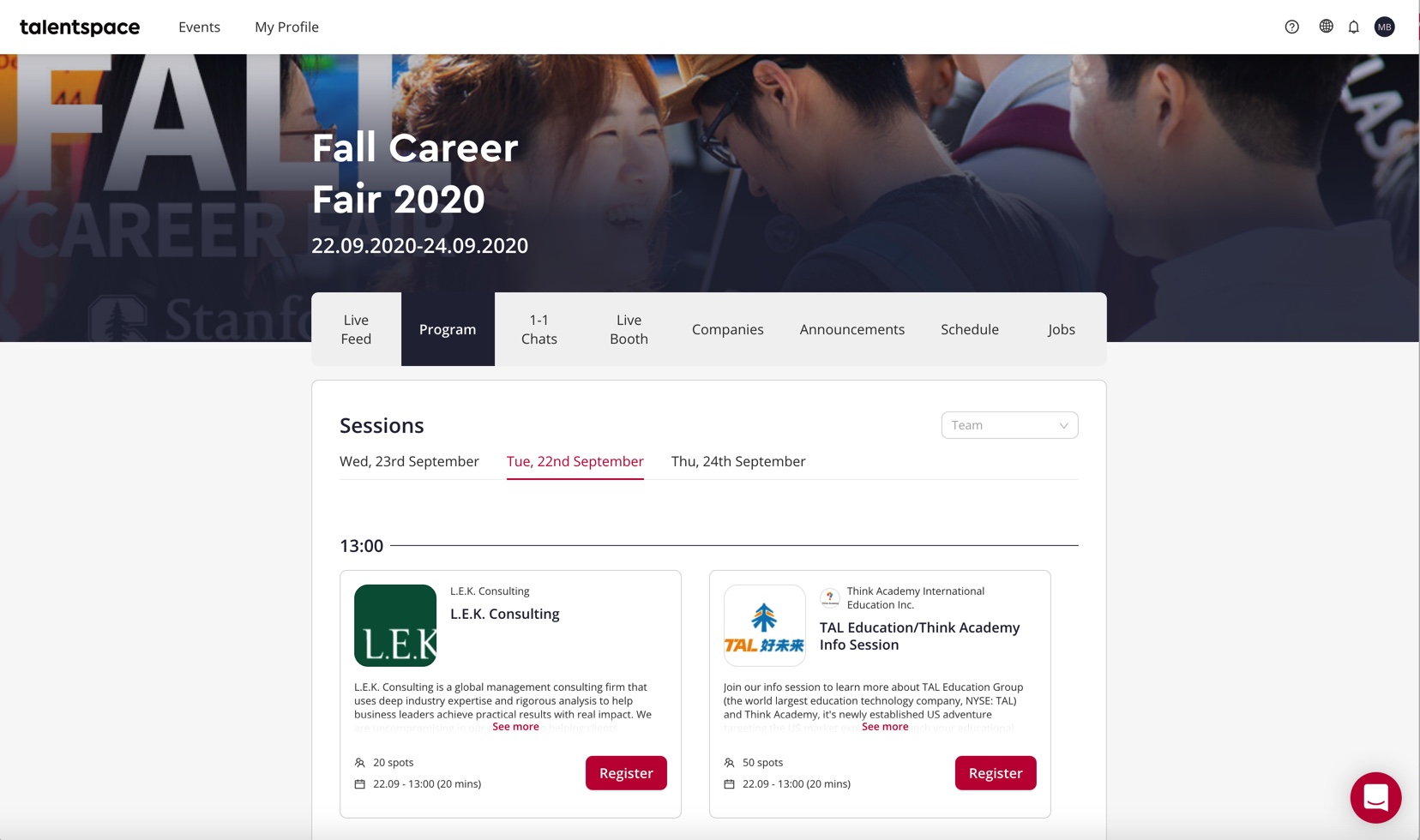The annual fall Bridging Education, Ambition, and Meaningful Work (BEAM) career fair went virtual from Sept. 22 to 24. Approximately 1,600 students and 172 employers attended the three-day event hosted on a platform called Talentspace — down from the approximate 2,500 students and 232 employers who attended last year.
Due to the COVID-19 pandemic, BEAM has not been able to physically open its doors, but Associate Dean of Career Education Jennifer Rowland promises that the center’s staff “are fully available” to students virtually.
The career fair is usually an outdoor event, where students visit employers under tents. Rowland called adapting such an event to a virtual setting “challenging,” citing initial uncertainty about the manner in which the transition would be accomplished.
“In selecting a career fair platform, we wanted to ensure that it would meet the varying needs of our student population,” Rowland wrote in a statement to The Daily.
Talentspace allows students to engage with employers in a variety of ways, from an individual conversation, to observing and chatting with representatives in their booths and viewing employer information on the site.
Despite these functionalities, student turnout decreased from the previous year and attending students reported engagement challenges due to the fair’s online format.
From difficulties setting up a Talentspace account to booths empty of employers, the virtual setting required more intention than the traditional fair, according to Arushi Gupta ’23.
“In person, it feels like a very informal experience […] whereas online, it felt like I was being interviewed by a panel of four people,” Gupta said.
The low attendance this year meant that those who did attend the fair found little competition for employers’ time in booths.
For Gupta, this was not ideal. The undeclared sophomore attended the fair “wanting to explore a little bit of what kinds of opportunities are out there.” For her purposes, last year’s in-person fair was more helpful because overhearing others’ conversations allowed her to gain an idea of what opportunities there were without having to engage in the recruitment process itself.
“It might have worked really well for someone who had a lot of direction and wanted a lot of that one on one,” she said.
Students interested in a one-on-one conversation with employers had access to a private chat feature. At an in-person fair students would have to wait “in really long lines” for the same individual interaction, Gupta said.
Some employers also complained about low student turnout. Emily Hernandez M.S. ’18, a representative for CelLink Corporation, an electrical engineering company producing flexible circuits, said that “it seems like maybe fewer students are engaged in the virtual process.”
Hernandez said that she is “not sure that there was enough turnout to justify coming back.”
Gupta said that “going on people’s websites would have been more helpful.” However, she also said that if she applied later in the year to an internship with a company that would be present at a future career fair, she would attend.
BEAM is offering all career fairs for the 2020-21 academic year through the Talentspace platform.
“We are pleased with how the Virtual Career Fair has gone overall, but recognize that there are changes we can make to continue to improve the experience,” Rowland wrote. “We have surveyed both students and employers every evening following the fair and are discussing the feedback to determine what improvements can be made for future events.”
Contact Marielle Baumgartner at [email protected].
